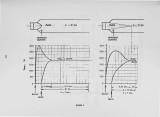| Title |
Burner Atomizer Requirements for Combustion of Waste Fuels |
| Creator |
Santoleri, Joseph J. |
| Publisher |
University of Utah |
| Date |
1986 |
| Spatial Coverage |
presented at Chicago, Illinois |
| Abstract |
Increased energy costs created by the 1973 1974 oil crisis forced many plant owners to look at many energy conservation methods. Included in these were the use of plant waste products (liquids, sludges, and solids) with reasonable heating va l ue. However, this presented many problems in materials handling, especially with the highly viscous liquids and sludges. It also presented prob l ems with the atomizers, the burners, refractory materials, as well as heat recovery equipment. As a result, some plant operators continued to have this material hauled away rather than utilize its energy value. Technology has been developed in the incinerator industry to adequately handle these materials, burn them, and reach the 99.99% destruction of the toxic, hazardous components. The technology developed for these burners and atomizers is available to combust the more difficult to handle tars (viscosities to 1000 cp) and waste fuels . The energy available from these materials can be utilized in the plant operations. This paper will discuss the design features required in a hig h intensity burner capable of burning gaseous wastes with heating values as low as 90 Btu/cu. ft. as wel l as liquid wastes with heati ng va l ues to 4500 Btu / lb. Problem areas that should be reviewed carefully in the design stage of a system will also be discussed. |
| Type |
Text |
| Format |
application/pdf |
| Language |
eng |
| Rights |
This material may be protected by copyright. Permission required for use in any form. For further information please contact the American Flame Research Committee. |
| Conversion Specifications |
Original scanned with Canon EOS-1Ds Mark II, 16.7 megapixel digital camera and saved as 400 ppi uncompressed TIFF, 16 bit depth. |
| Scanning Technician |
Cliodhna Davis |
| ARK |
ark:/87278/s6kp84qs |
| Setname |
uu_afrc |
| ID |
3886 |
| Reference URL |
https://collections.lib.utah.edu/ark:/87278/s6kp84qs |












